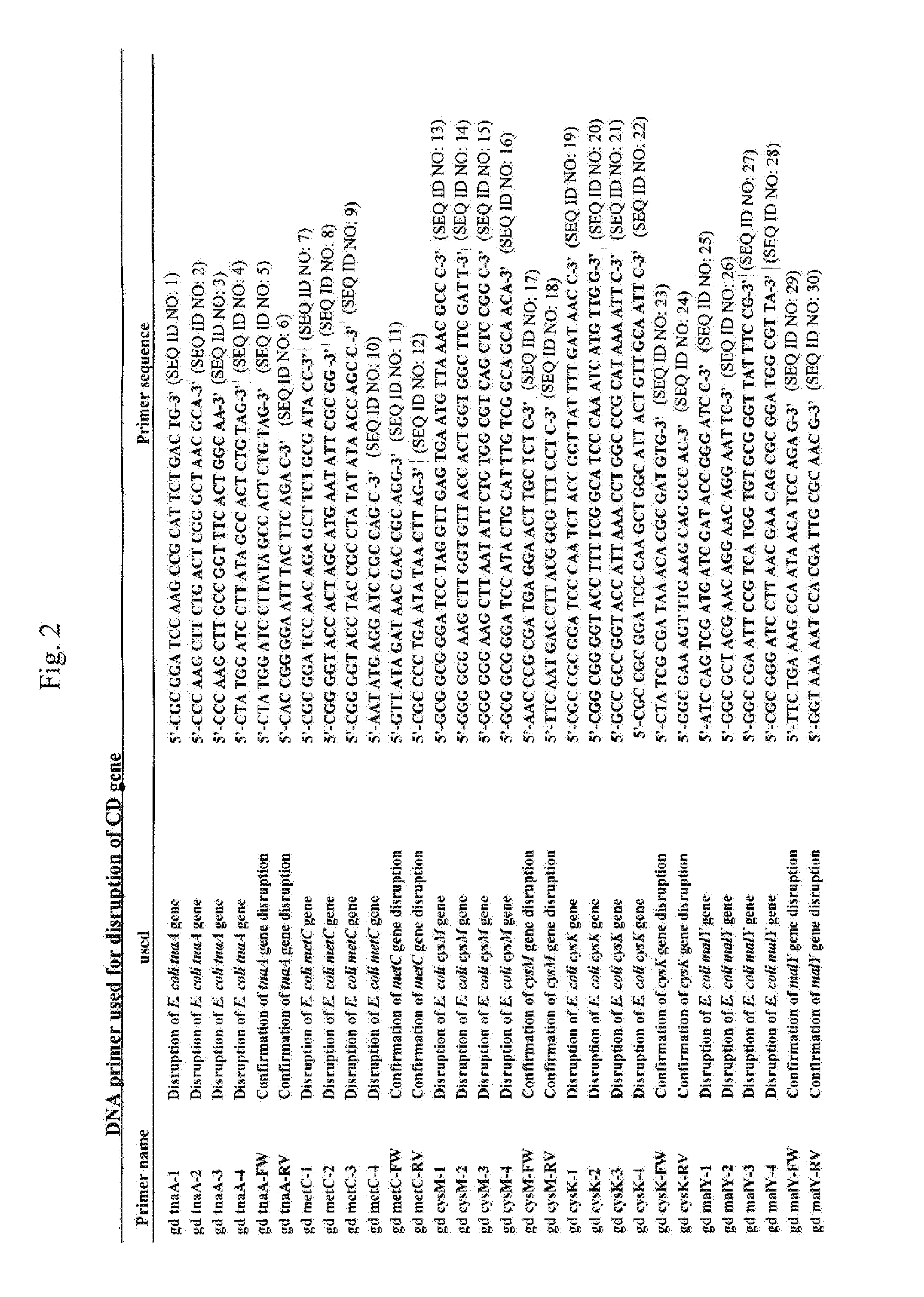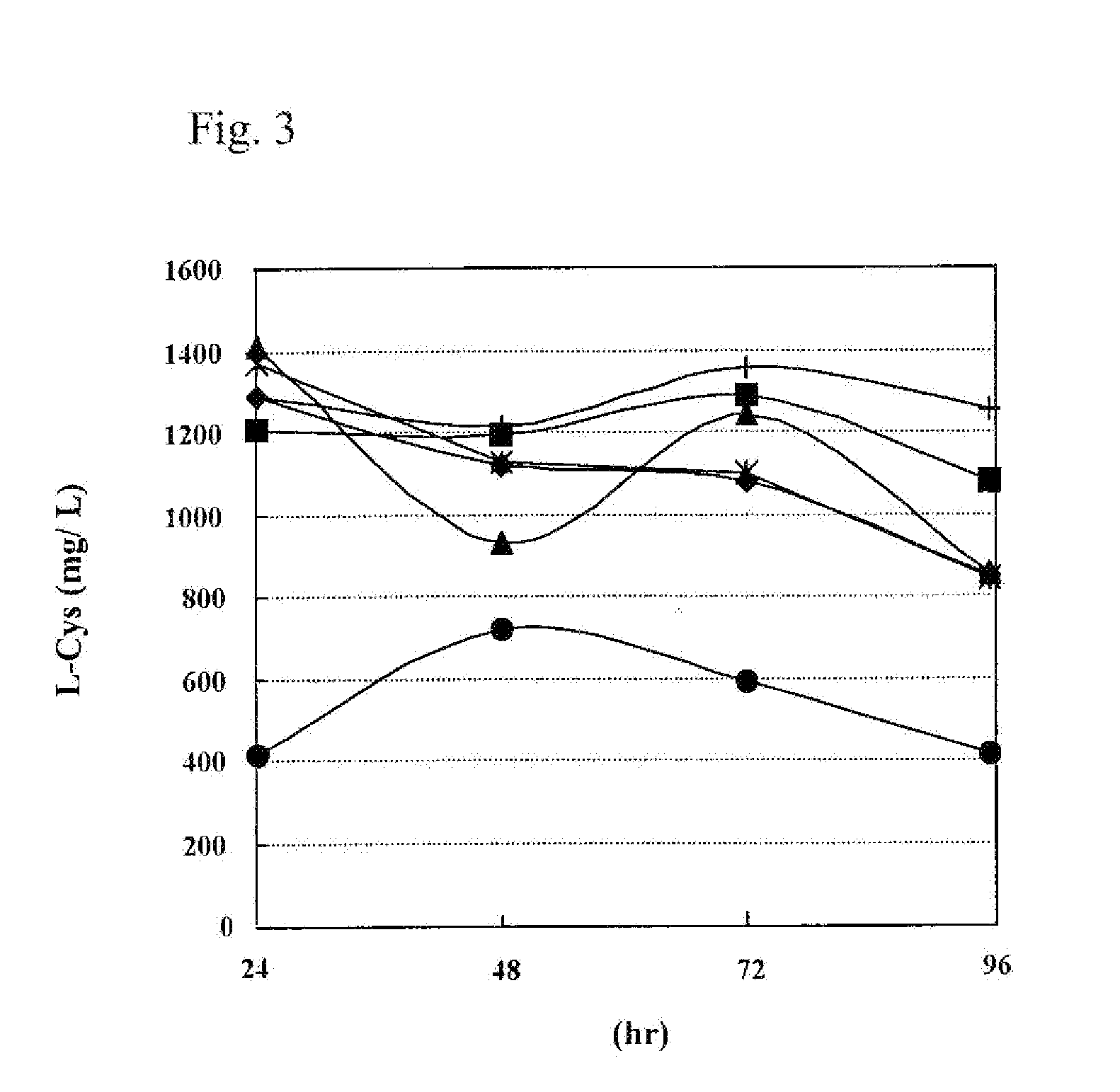L-cysteine producing microorganism and a method for producing l-cysteine
a technology of lcysteine and microorganisms, which is applied in the direction of microorganisms, enzymology, transferases, etc., can solve the problems that no enzyme other than these has been previously reported to have cd activity, and achieve the effect of reducing or eliminating the activity of cysteine desulfhydras
- Summary
- Abstract
- Description
- Claims
- Application Information
AI Technical Summary
Benefits of technology
Problems solved by technology
Method used
Image
Examples
examples
[0057]Hereinafter, the present invention will be explained in detail by the following non-limiting examples.
[0058]Strains
[0059]cysE-deficient Escherichia coli JM39 (F+cysE51 tfr-8) (Denk, D. and Bock, A., J. Gene. Microbiol., 133, 515-525 (1987)) was used to identify a gene encoding a protein having CD activity.
[0060]To evaluate L-cysteine productivity of the CD-gene-disrupted strains, the following strains were used: JM39ΔtnaA, JM39ΔmetC, JM39ΔcysM, JM39ΔmalY, and JM39ΔcysK as a single-CD-gene-disrupted strain; JM39ΔtnaAΔmetC and JM39ΔcysKΔcysM as a double-CD-gene-disrupted strain; JM39ΔtnaAΔmetCΔcysMΔmalY as a quadruple-CD-gene-disrupted strain; and JM39ΔtnaAΔmetCΔcysKΔcysMΔmalY as a quintuple-CD-gene-disrupted strain. In the production of L-cysteine, a total of six strains, including JM39, single-CD-gene-disrupted strains of JM39ΔtnaA, JM39ΔmetC, JM39ΔcysM, and JM39ΔmalY, and quadruple-CD-gene-disrupted strain JM39ΔtnaAΔmetCΔcysMΔmalY, all of which harbors pEAS-m, a plasmid conta...
PUM
| Property | Measurement | Unit |
|---|---|---|
| temperature | aaaaa | aaaaa |
| pH | aaaaa | aaaaa |
| pH | aaaaa | aaaaa |
Abstract
Description
Claims
Application Information
 Login to View More
Login to View More - R&D
- Intellectual Property
- Life Sciences
- Materials
- Tech Scout
- Unparalleled Data Quality
- Higher Quality Content
- 60% Fewer Hallucinations
Browse by: Latest US Patents, China's latest patents, Technical Efficacy Thesaurus, Application Domain, Technology Topic, Popular Technical Reports.
© 2025 PatSnap. All rights reserved.Legal|Privacy policy|Modern Slavery Act Transparency Statement|Sitemap|About US| Contact US: help@patsnap.com



